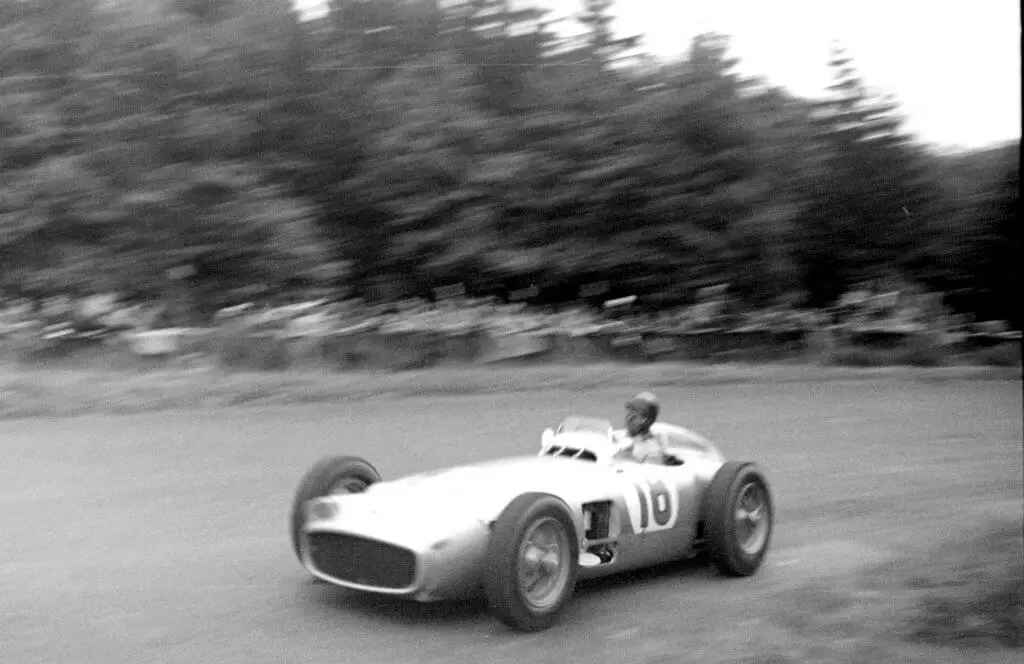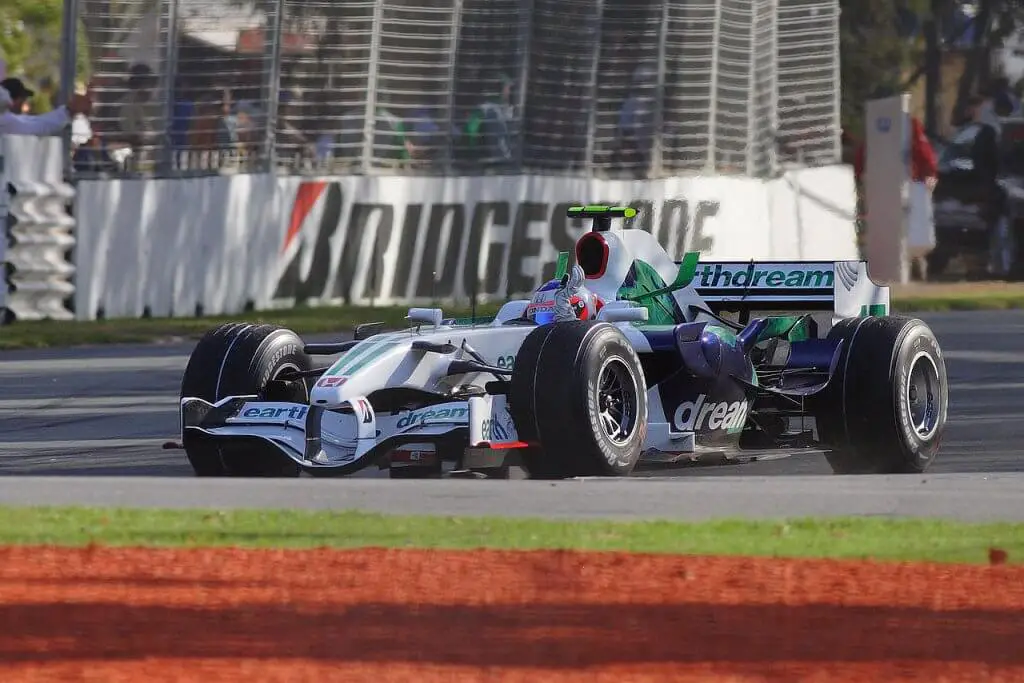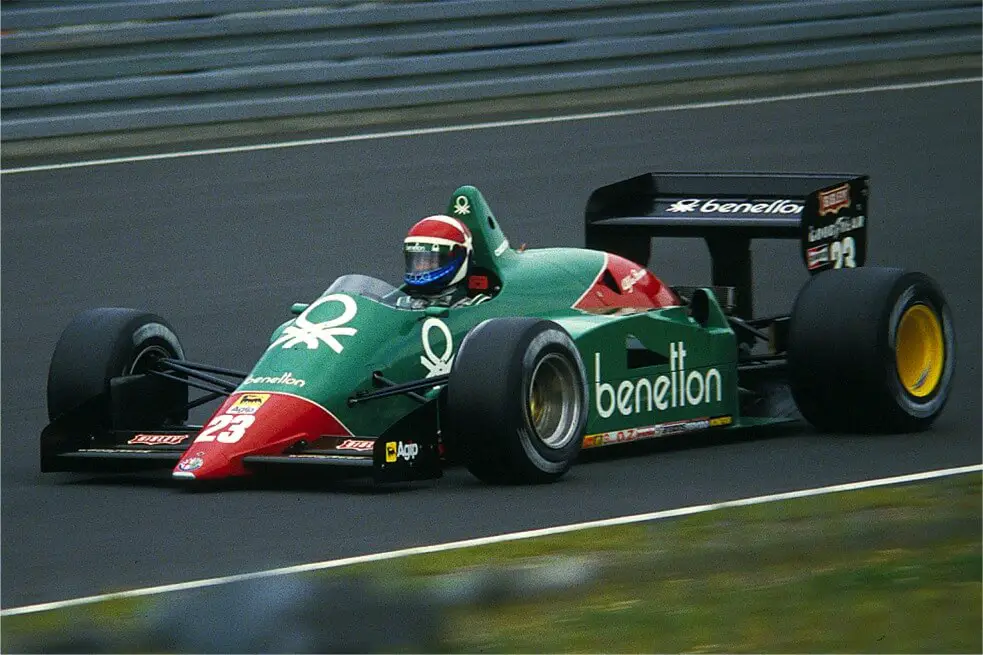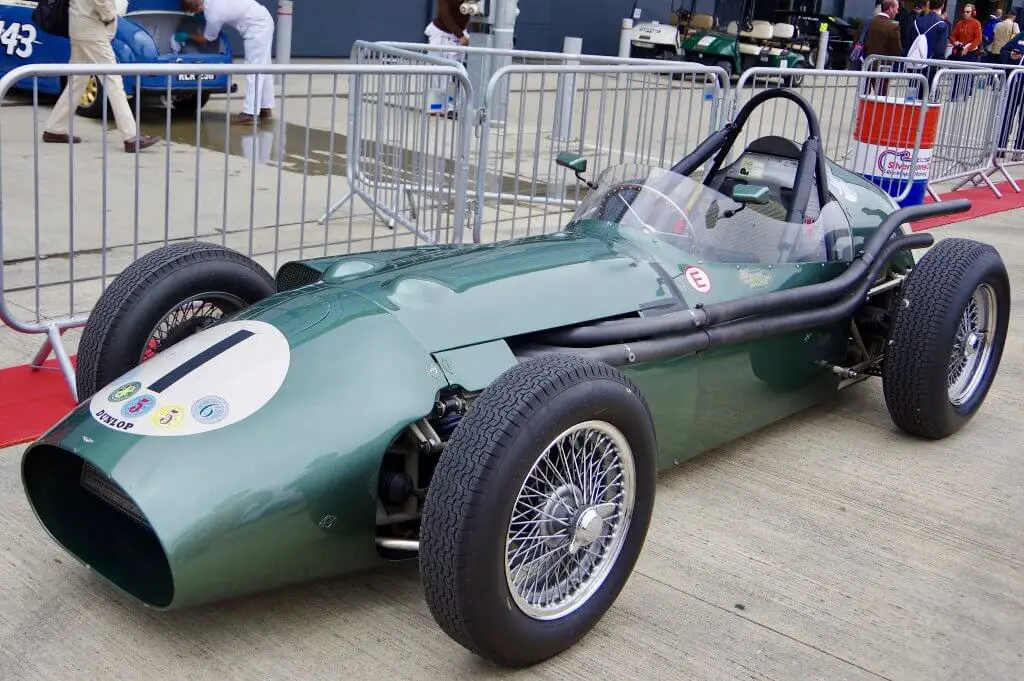In 2021, the Aston Martin name returned to Formula 1 after a record 61 year absence. We take a look at the other teams who returned to F1 after the longest absences!
61 years: Aston Martin
Aston Martin returned to Formula 1 in 2021, ending a 61 year absence. When Sebastian Vettel and Lance Stroll lined up on the grid in British racing green at the Bahrain Grand Prix, it was the first time an Aston Martin car appeared in a Grand Prix since the 1960 British Grand Prix.
The 1960 British Grand Prix was the only race in which the constructor’s DBR5 would be entered. Neither Roy Salvadori nor Maurice Trintignant qualified in the top ten for the race, while Trintignant would be the team’s only finisher in the race – five laps down on race winner Jack Brabham. Aston Martin had failed to pick up a point in any of their four races in the 1959 season with their best result being sixth place for Salvadori in the British and Portuguese Grands Prix.
Following Lawrence Stroll’s investment in Aston Martin in January 2020, the Silverstone-based team – which has raced in F1 since 1991, most recently as Racing Point – became the Aston Martin works team in 2021, ending the brand’s record-breaking 61-year absence from the championship.

55 years: Mercedes
Until Aston Martin re-joined the grid in 2021, Mercedes held the record for the longest period of absence from Formula 1. Juan Manuel Fangio won two Drivers’ Championships for the team in 1954 and 1955, but Mercedes withdrew from F1 at the end of the 1955 season following the Le Mans disaster which had occurred earlier that year.
Mercedes returned as an engine manufacturer only almost 40 years later, supplying teams with engines from 1994 onwards. Most notably, McLaren enjoyed success with Mercedes engines from 1995 onwards and won their latest Constructors’ Championship with Mercedes power in 1998.
After Brawn GP won the 2009 Drivers’ and Constructors’ Championships with Mercedes engines, the Daimler group purchased a 45.1% stake in the team, and it was re-branded as Mercedes for the 2010 season. The 2010 Bahrain Grand Prix was the first race to feature a Mercedes car on the grid since the 1955 Italian Grand Prix 55 years previously.
38 years: Honda
Honda made their first Formula 1 appearance at the 1964 German Grand Prix. Richie Ginther took the Japanese manufacturer’s first win in the next season, at the 1965 Mexican Grand Prix. In 1967 and 1968, John Surtees recorded a further four podium finishes for the team – including victory at the 1967 Italian Grand Prix. Honda withdrew from F1 at the end of 1968.

The manufacturer returned as an engine supplier in 1983 and would go on to achieve success with McLaren and Williams. But it was not until 2006 – 38 years after they withdrew from the sport – that the Honda works team would return.
Honda had nearly made a comeback six years previously at the turn of the millennium, but the project was shelved and the manufacturer instead had close ties with the BAR team. Those ties became stronger as Honda became the sole owner of the team in September 2005. The team re-branded as Honda in 2006, and ended their 38 year absence from the grid at the 2006 Bahrain Grand Prix.
Jenson Button went on to win for the team at the Hungarian Grand Prix, but 2007 and 2008 would be tougher seasons and the global economic crisis led to Honda’s withdrawal from the sport. The team was sold and became Brawn GP – who won the Drivers’ and Constructors’ Championships in 2009.
34 years: Alfa Romeo
When Sauber re-branded as Alfa Romeo at the start of the 2019 season, it had been 34 years since an Alfa Romeo car had last appeared on the F1 grid. The Alfa Romeo brand had appeared for a second stint in the sport between 1979 and 1985, but with little success, recording only five podium finishes. Alfa Romeo withdrew from F1 after the 1985 Australian Grand Prix, but continued to supply engines to the Osella team for the next two seasons.
In early 2019, Sauber announced that they would re-brand as Alfa Romeo for the upcoming season while maintaining ownership of the team. Though not a works team, Kimi Raikkonen and Antonio Giovinazzi became the first drivers to drive Alfa Romeo branded cars in a Grand Prix for 34 years at the 2019 Australian Grand Prix. The team would remain known as Alfa Romeo until the 2024 season.
28 years: Alfa Romeo
In addition to their absence from the sport between 1985 and 2019, Alfa Romeo were also absent between 1951 and 1979. Alfa Romeo had dominated the first two seasons of Formula 1, winning all but three of the first 13 World Championship Grands Prix. The team had operated on a surprisingly low budget and with Ferrari beginning to show strength in F1, Alfa Romeo quit the sport at the end of the second season. Juan Manuel Fangio recorded the team’s last victory at what was to be their last appearance at the 1951 Spanish Grand Prix.

While some teams would use independently developed Alfa Romeo engines over the next decades – most notably Brabham, who recorded two victories with the engines in 1978 – Alfa Romeo would not return as a works team until the end of the 1970s. Autodelta, the company’s sporting department, entered F1 under the Alfa Romeo name for the first time at the 1979 Belgian Grand Prix. Bruno Giacomelli qualified for the race in 14th place and retired following a collision. It was a sign of things to come for this incarnation of the team who, as mentioned above, had little success in their second F1 stint.
17 years: Renault
Renault would probably win the award for most withdrawals and returns to F1 as both an engine supplier and a works team. Since first entering the sport in 1977, the works team’s longest period of absence came between 1985 and 2002. Renault had enjoyed a successful time in their first stint in the sport, but failed to win the Constructors’ Championship, finishing as runners-up in 1983. The team withdrew at the end of the 1985 season amid major financial problems, though the French manufacturer continued supplying engines in 1986.
Their engines returned in 1989 for a highly successful period, powering Williams and Benetton to championship success between 1992 and 1997. In 2000, Renault purchased the Benetton team. Despite buying the team, the Benetton name remained until 2002, with Renault keen to wait until they had potential for success before rebranding.
Header image: David Merrett, Flickr / CC BY 2.0
This article was originally published in March 2021 and has since been updated.


Pingback: Aston Martin return to F1 with the AMR21 - Lights Out ●●●●●
Pingback: 2021 Bahrain GP: Milestones and Records to Break - Lights Out ●●●●●